How to Disable Face Recognition or Fingerprint Login on Windows 10?
These days most of the laptops and tablets come with a camera and fingerprint sensors. Windows 10 provides the sign-in options for face recognition and fingerprint login. By using these users can sign-in to their system without typing any password or PIN. However, if users do not want this additional layer of security or they are sharing systems with other people. They can disable these biometrics security features on their Windows. They can only disable the sign-in options or completely disable the biometric devices.

There are several ways of disabling the face recognition and fingerprint login on Windows 10. The most common ones are by configuring it in the Windows Settings or through device manager. However, there are also other methods, like Group Policy Editor and Registry Editor. These methods will completely disable the features from even Windows Settings.
Removing Face Recognition or Fingerprint Login in Windows Settings
The face recognition and fingerprint login can be managed in the sign-in option in Windows Settings. When these options are enabled, you will be able to find them listed. Users can simply remove these options from sign-in settings. This will stop the Fingerprint or Face Sign-in on your system and users can now sign-in without using these. These sign-in options can be added back anytime the user wants to. Also, these options will be only available for the systems that have these devices.
- Press the Windows + I key to open the Windows Settings. Now head over to the Accounts setting.
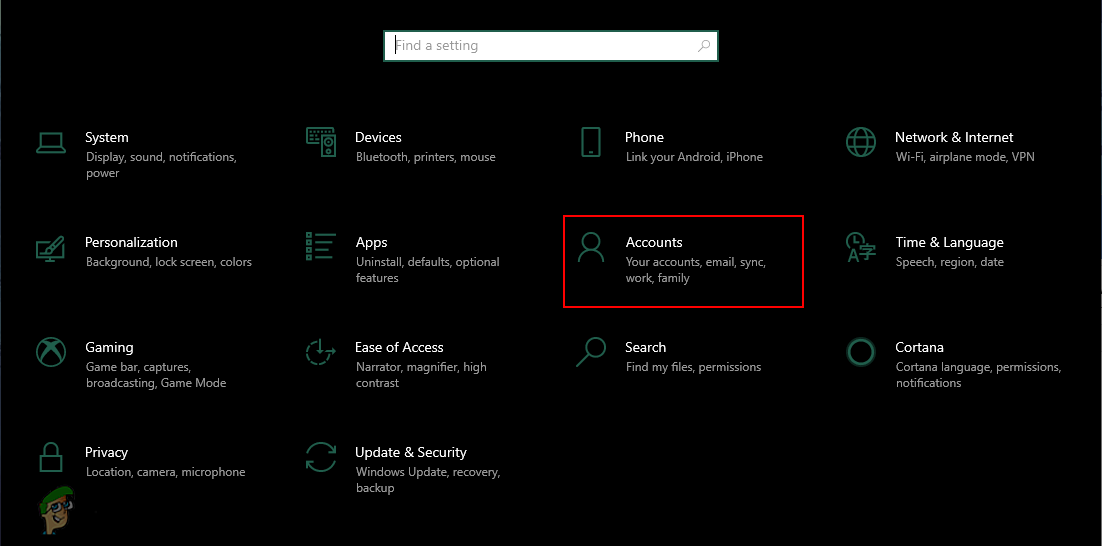
Opening Accounts Settings - In the left pane, click on the Sign-in options. Now click on the Windows Hello Face and Windows Hello Fingerprint, then click on the Remove button to disable it.

Removing Fingerprint Login - This will disable the biometrics feature in Windows.
Disabling Biometric Devices through Device Manager
Another way to completely disable the fingerprint login or face recognition is by disabling the devices in the device manager. Users can disable the devices that are additional to the operating system, which does not cause stability issues in the system. Just like disabling the device, users can enable it back anytime they want. Follow the below steps for disabling biometric devices through device manager:
- Hold the Windows key and press R to open a Run dialog. Then type “devmgmt.msc” and press Enter to open Device Manager. You can also search for Device Manager through the Windows search feature or through the control panel.

Opening Device Manager - In the Device Manager, search for Biometric Devices. Right-click on it and choose the Disable option.
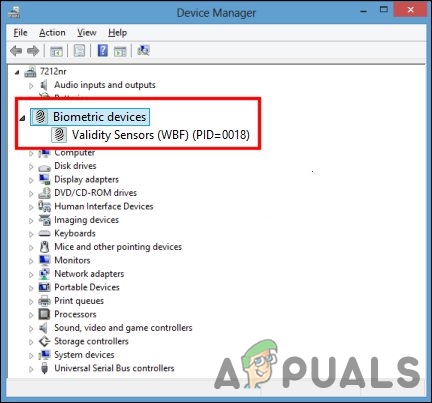
Disabling biometric devices - This will disable the devices and it will stop working until you enable it back again.
Disabling Biometrics by Using the Local Group Policy Editor
You can also disable the biometrics sign-in options through the local group policy editor. By default, the biometrics is enabled on your system. The Local Group Policy Editor is pretty simple to use and configure any settings. It also provides the details about each setting that users click on.
If you are using the Windows Home version, then better skip this method. The Local Group Policy Editor isn’t available on Windows Home Edition.
If you got the Local Group Policy Editor on your system, then you can disable the setting as shown in the below steps:
- Press the Windows and R keys together to open the Run dialog. Now type “gpedit.msc” in the dialog and press the Enter key to open the Local Group Policy Editor.
Note: If it shows the UAC (User Account Control) prompt, then choose Yes.
Opening Local Group Policy Editor - Navigate to the following location in the left pane of the Local Group Policy Editor:
Computer Configuration\Administrative Templates\Windows Components\Biometrics
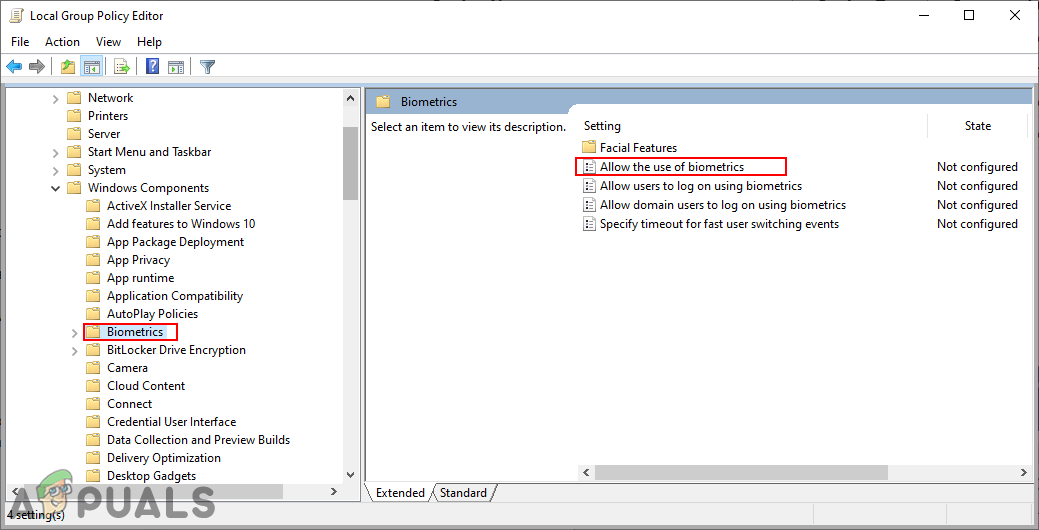
Opening the setting - Double-click on the setting named “Allow the use of biometrics“. This will open another window, change the toggle from Not Configured to Disabled. Click on the Apply/Ok button to apply the changes.
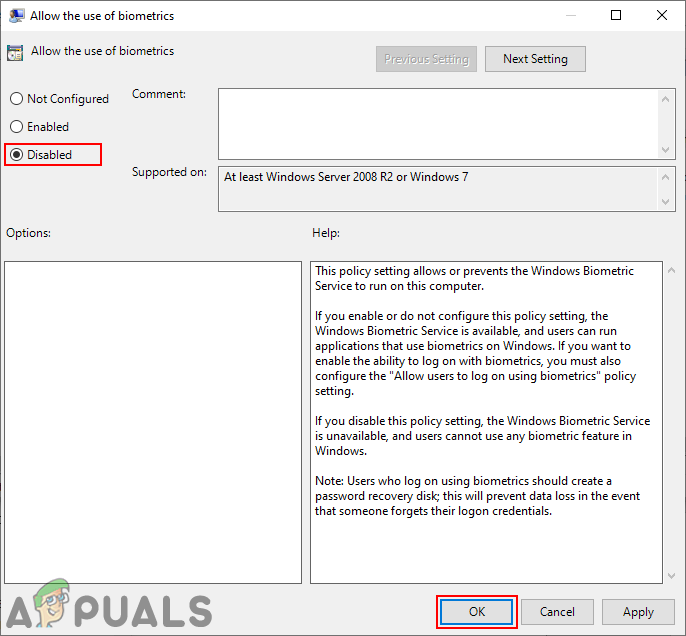
Disabling biometrics - Biometrics will be disabled now. To enable it back, just change the toggle option back to Not Configured or Enabled.
Disabling Biometrics by Using the Registry Editor
Unlike the Local Group Policy Editor, the Registry Editor is available on all versions of the Windows operating system. Everything a user can configure through the Local Group Policy Editor can also be done through the Registry Editor. This will require some technical steps from users before configuring a specific setting. Registry Editor also provides the backup feature that users can use to restore the settings back to as it was. Follow the below steps to disable the biometrics on your system:
- Open the Run dialog by pressing the Windows + R keys together. Then, type “regedit” and press the Enter key to open Registry Editor. Choose Yes for UAC (User Account Control) prompt.

Opening the Registry Editor - Navigate to the following key in the left pane of Registry Editor:
HKEY_LOCAL_MACHINE\SOFTWARE\Policies\Microsoft\Biometrics
- If the Biometrics key isn’t there already, then create a new key by right-clicking on the left pane and choosing the New > Key option as shown.

Creating the missing key - Now create a value named Enabled by right-clicking on the right side and choosing New > DWORD (32-bit) Value. Double-click on it to open it and make sure the data value is 0 as it should be by default.
Note: Data value 1 is for enabling and data value 0 is for disabling.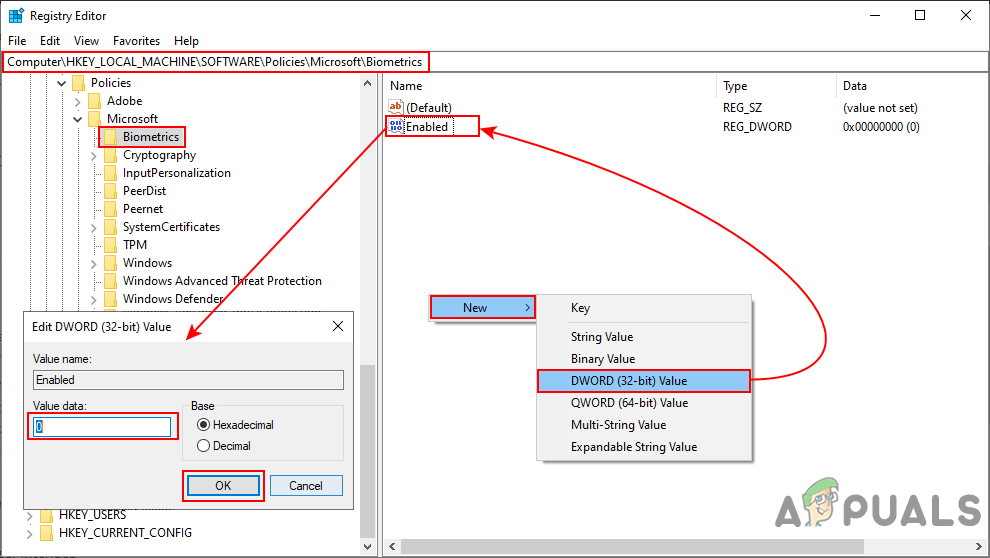
Creating the enabled value with data value 0 - This will disable the biometrics through Registry Editor.





